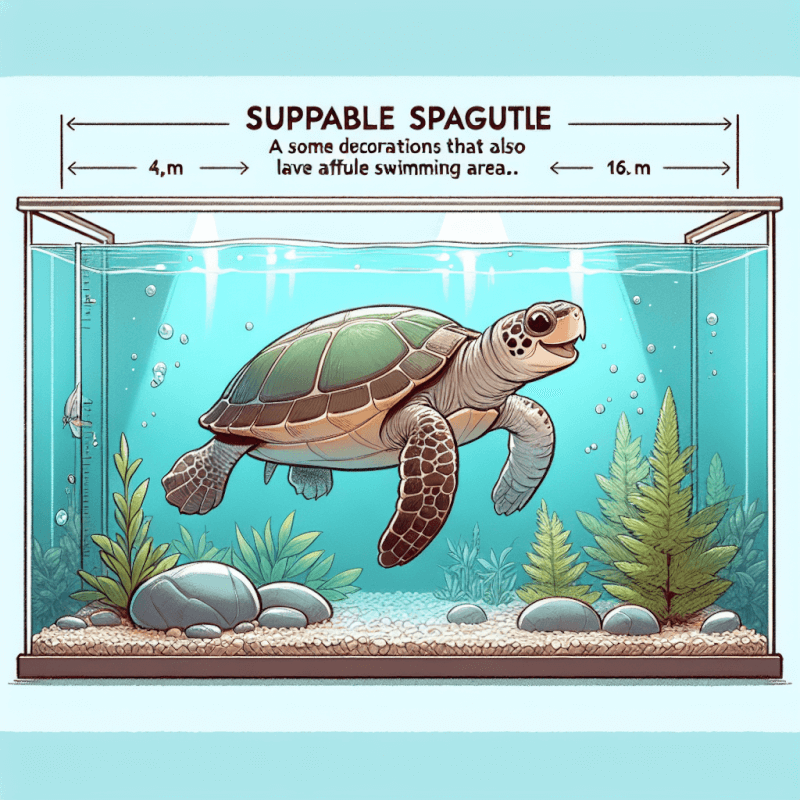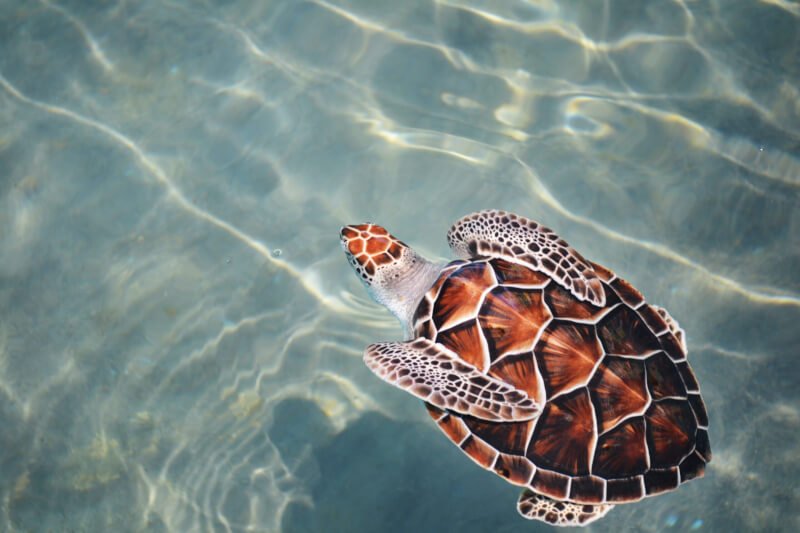Imagine you’re the proud owner of a cute little turtle, swimming happily in its tank. But have you ever wondered if that tank is providing enough space for your shelled friend to stretch its fins? In this article, we’ll explore the telltale signs that indicate if your turtle’s tank might be too cramped, and we’ll offer some helpful tips on how to ensure your scaly companion enjoys a spacious and comfortable habitat. So, let’s dive in and discover how to keep your turtle’s home as cozy as can be!
Signs that indicate the tank is too small
Turtle unable to fully extend its limbs
If your turtle is unable to fully extend its limbs, it could be a sign that the tank is too small. Turtles need ample space to move around and stretch their limbs properly. If the tank is too small, they may be restricted in their movement, which can lead to musculoskeletal issues.
Turtle hitting the tank walls
When a turtle constantly hits the tank walls while swimming, it’s a clear indication that the tank is too small. Turtles need enough open space to swim freely without constantly bumping into the walls. If they are constantly hitting the tank walls, it can cause stress and injury to your turtle.
Insufficient swimming space
Turtles are aquatic creatures, and swimming is an essential part of their daily activities. If your turtle is unable to swim freely and only has limited space to move around in the tank, it could be a sign that the tank is too small. Insufficient swimming space can lead to poor physical development and overall health problems.
Lack of hiding spots
Turtles need hiding spots in their tank to feel secure and have a place to retreat to when they feel threatened or stressed. If your turtle’s tank is too small to accommodate hiding spots, it can cause stress and anxiety for your turtle. Providing adequate hiding spots is crucial for their well-being.
Filthy tank water
A small tank can quickly lead to poor water quality, as it becomes more challenging to maintain proper filtration and regular cleaning. If you notice that the tank water becomes quickly polluted, even with regular maintenance, it may be a result of the tank being too small. Filthy tank water can have a detrimental effect on your turtle’s health and overall quality of life.
Stunted growth
One of the most common signs of a small tank is stunted growth in turtles. Turtles need a spacious environment to grow properly and develop at a healthy rate. If your turtle is not reaching its expected size based on its species and age, it could be due to the tank being too small. Stunted growth can lead to various health issues and affect the overall lifespan of your turtle.
Aggressive behavior
Turtles that are housed in a small tank may exhibit aggressive behavior towards other tank mates or even their owners. Limited space can cause territorial disputes and heightened stress levels, leading to aggressive behavior. If you notice frequent aggression in your turtle, it may be a signal that the tank is too small and causing discomfort.
Excessive basking
Turtles require a proper balance of swimming and basking in their tank. If your turtle is spending an excessive amount of time basking, it could be because the tank is too small to provide adequate swimming space. Turtles bask to regulate their body temperature, and if they are unable to swim comfortably, they may rely on basking as a substitute. Excessive basking without enough swimming can impact their overall health.
Turtle tank size guidelines
Common turtle species and their tank size requirements
Different turtle species have specific tank size requirements based on their size, activity level, and natural habitat. It is essential to research and understand the specific tank size needs for the species of turtle you own. For example, smaller species like Mud Turtles may only require a 30-gallon tank, while larger species like Red-Eared Sliders may need a tank as big as 100 gallons or more.
Factors to consider in determining tank size
When determining the appropriate tank size for your turtle, there are several factors to consider. These include the turtle’s size, growth rate, activity level, and natural habitat. Larger turtles, fast-growing turtles, and those that are more active will require larger tanks to meet their needs adequately. It is crucial to consider these factors to ensure the tank size is suitable for your turtle’s overall well-being.
Minimum tank dimensions per turtle size
To provide a comfortable and spacious environment for your turtle, there are minimum tank dimensions to consider based on their size. For example, a turtle measuring 4-6 inches would require a tank with dimensions of at least 40 gallons (36″L x 18″W x 16″H). As the turtle grows, the tank size should also increase to accommodate its needs adequately.
Importance of providing larger tanks as the turtle grows
Providing larger tanks as your turtle grows is of utmost importance. Turtles experience continual growth throughout their lives, and their tank size should reflect their increasing size and needs. Upgrading to a larger tank ensures that your turtle has enough space to move, swim, and exhibit natural behaviors. It also helps prevent potential health problems associated with cramped conditions in small tanks.
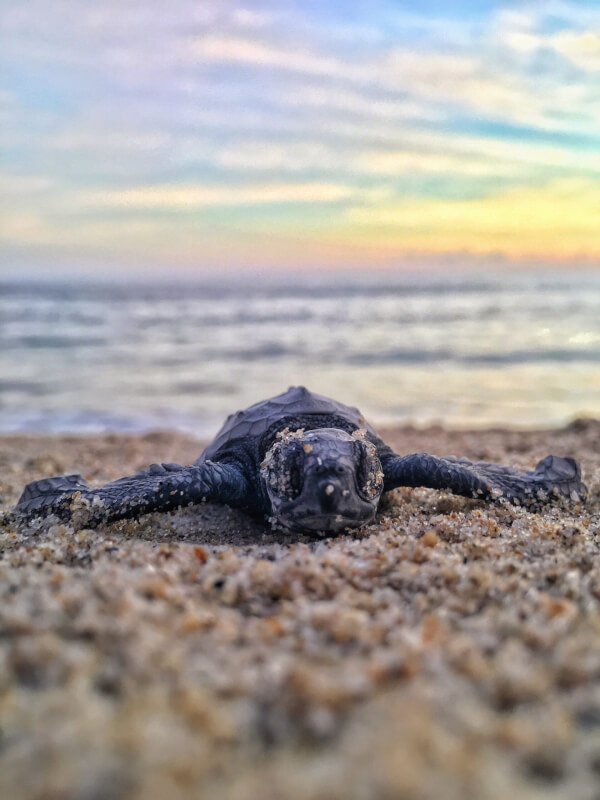
Consequences of a small tank for turtles
Health problems
Keeping turtles in a small tank can lead to various health problems. Limited space can hinder their physical development, leading to stunted growth and improper bone and muscle development. Additionally, cramped conditions can compromise the turtle’s immune system, making them more susceptible to diseases and infections. Poor water quality due to insufficient filtration and maintenance in a small tank can also cause respiratory and skin issues.
Behavioral issues
Turtles kept in small tanks may exhibit behavioral issues due to stress and frustration. Restricted movement and lack of stimulation can lead to aggression, excessive hiding, or even self-harming behaviors. Turtles that are unable to engage in natural behaviors like swimming, exploring, and basking can become lethargic and inactive. Behavioral problems can significantly impact your turtle’s overall well-being and quality of life.
Stress and reduced lifespan
Living in a small tank can be highly stressful for turtles. The constant limitations on their movement, lack of adequate space, and inability to exhibit natural behaviors can lead to chronic stress. Prolonged stress can weaken the immune system, making the turtle more susceptible to illnesses. Additionally, the stress and reduced quality of life can ultimately shorten their lifespan. Providing a suitable tank size is crucial for ensuring a healthier and longer life for your turtle.
How to measure tank size correctly
Use of appropriate tank size calculators
To measure tank size correctly, using appropriate tank size calculators specific to turtles can be highly beneficial. These calculators take into account the size and species of your turtle, providing recommendations for the minimum tank dimensions. Tank size calculators help ensure that you provide enough space for your turtle’s comfort and well-being.
Tank size to water volume ratio
In addition to tank dimensions, considering the water volume is also essential. The tank should have an appropriate ratio of water volume to tank size to provide enough swimming space for your turtle. A general guideline is to aim for a water depth that allows the turtle to fully submerge and swim comfortably. The specific ratio may vary depending on the species and size of the turtle.
Consideration of turtle size and activity level
When measuring tank size, it is crucial to consider your turtle’s current size and potential growth, as well as its activity level. Turtles that are larger or more active will require more space to move around comfortably. By taking into account these factors, you can ensure that the tank size adequately meets your turtle’s needs.
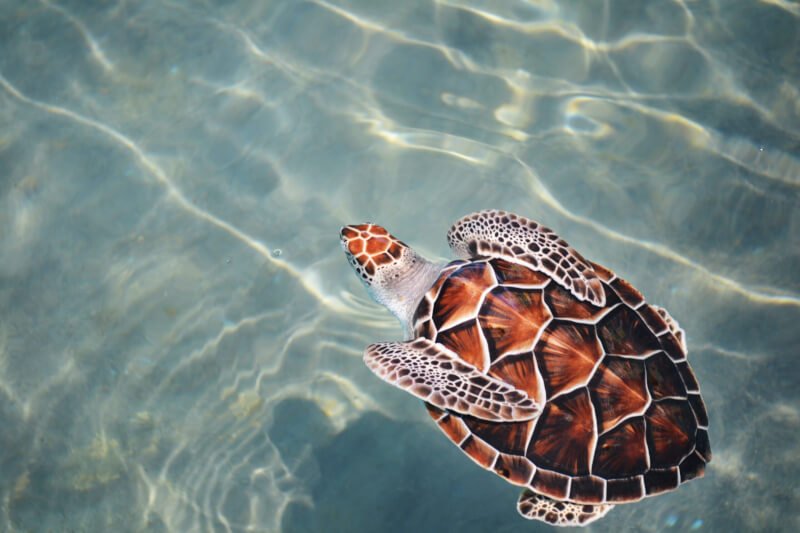
Steps to provide a suitable tank
Researching turtle species requirements
Before setting up a tank for your turtle, research the specific requirements of your turtle’s species. Different species have different environmental needs, including tank size, water temperature, lighting, and filtration. Understanding these requirements is crucial for providing a suitable tank environment for your turtle.
Choosing the right tank size
Based on your research and the specific needs of your turtle, choose the right tank size. Consider factors such as your turtle’s current size, potential growth, and activity level. Remember to provide ample swimming space, hiding spots, and basking areas. It is better to err on the side of a larger tank to ensure your turtle’s comfort and well-being.
Setting up the tank environment
Once you have chosen the right tank size, set up the tank environment accordingly. Install appropriate lighting and heating systems to replicate the natural habitat of your turtle. Create a suitable basking area with a temperature gradient for your turtle to regulate its body temperature effectively. Add decorations such as rocks, driftwood, and plants to provide hiding spots and promote a more naturalistic environment.
Maintaining appropriate water quality
To maintain a suitable tank for your turtle, it is essential to monitor and maintain appropriate water quality. Invest in a reliable filtration system to keep the water clean and free from harmful pollutants. Regularly test the water parameters and perform necessary water changes to prevent the build-up of toxins and ensure proper hygiene for your turtle.
Providing proper basking areas
Turtles require access to proper basking areas to regulate their body temperature and dry off. Ensure that the basking area is large enough to accommodate your turtle comfortably and has a non-slip surface. The basking area should be equipped with appropriate lighting and heating elements to mimic natural sunlight and provide necessary warmth.
Adding hiding spots and vegetation
To promote a more enriching and natural environment for your turtle, add hiding spots and vegetation to the tank. Turtles appreciate having places to retreat to when they feel stressed or threatened. Rocks, caves, and artificial plants can create hiding spots and add visual interest to the tank. Make sure the decorations are clean and free from any sharp edges or potential hazards.
Common mistakes to avoid
Underestimating turtle growth
One common mistake turtle owners make is underestimating their turtle’s growth. Turtles can grow significantly over time, and a tank that may seem spacious initially can quickly become cramped. Always consider your turtle’s potential growth when selecting a tank size and be prepared to upgrade as necessary.
Neglecting the need for regular tank upgrades
Neglecting to upgrade your turtle’s tank as it grows is another mistake to avoid. A tank that was suitable for a small turtle will not be adequate for a larger, fully-grown turtle. Failing to provide the necessary space can lead to health problems, stunted growth, aggression, and overall discomfort for your turtle.
Overcrowding tank with multiple turtles
Introducing multiple turtles to a small tank is a recipe for disaster. Overcrowding can result in increased aggression, stress, and poor water quality. Each turtle requires its own space to swim, bask, and establish its territory. It’s important to provide a separate tank or an appropriately sized enclosure for each turtle to ensure their well-being.
Not providing proper filtration system
Proper filtration is essential for maintaining water quality and preventing the build-up of harmful toxins in the tank. Neglecting to invest in a reliable filtration system can lead to poor water quality, which can adversely affect your turtle’s health. Always ensure that the filtration system is suitable for the tank size and consistently monitor and maintain it.
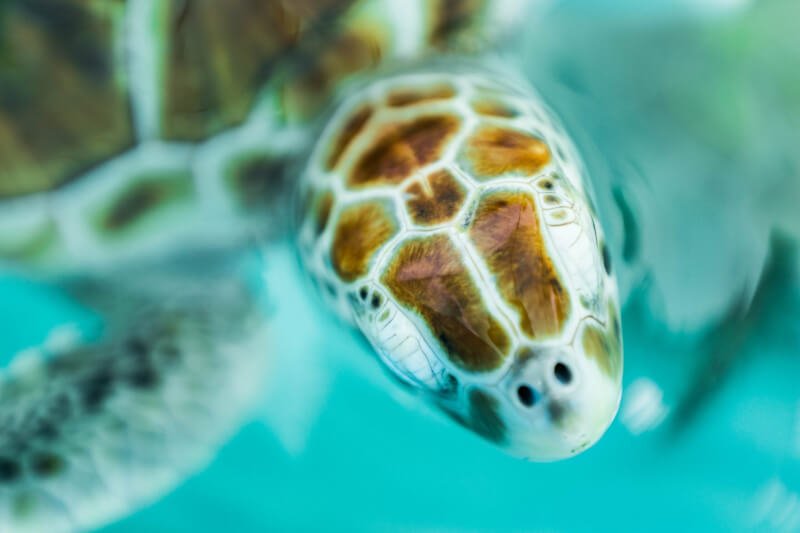
Tips for maximizing space in a small tank
Utilizing vertical space
In a small tank, utilizing vertical space can help provide additional swimming and basking areas for your turtle. Consider adding floating platforms or shelves that attach to the sides of the tank. These platforms create additional levels for your turtle to explore and utilize, effectively maximizing the available space.
Using floating basking platforms
Floating basking platforms are an excellent way to maximize space in a small tank. These platforms provide your turtle with a comfortable area to bask while conserving swimming space below. They can be easily attached and adjusted to suit your turtle’s needs, providing a practical solution for small tank sizes.
Optimizing the layout and arrangement of decorations
The way you arrange decorations and other tank accessories can make a significant difference in maximizing space. Optimize the layout by placing decorations in a way that allows for open swimming areas and doesn’t overcrowd the tank unnecessarily. Proper arrangement can create more space for your turtle while still providing an aesthetically pleasing environment.
Frequent tank cleanings to maintain water quality
In a small tank, maintaining water quality is crucial. Regular tank cleanings will help prevent the build-up of waste and toxins, ensuring a healthier and more spacious environment for your turtle. Perform partial water changes frequently and vacuum the substrate to remove any debris or waste. Keeping the tank clean will provide your turtle with a more comfortable living space.
When to transition to a larger tank
Monitoring the turtle’s size and behavior
Regularly monitor your turtle’s size and behavior to determine when it’s time to transition to a larger tank. If your turtle is rapidly growing or demonstrating signs of discomfort, it may be an indication that the current tank is no longer suitable. Pay close attention to any changes in behavior, such as increased aggression, reduced activity, or avoidance of certain areas in the tank.
Consideration of growth rate
Consider your turtle’s growth rate when deciding to transition to a larger tank. Some turtle species grow faster than others, and being aware of this will help you anticipate when the current tank size will become inadequate. If your turtle is rapidly outgrowing its tank, it’s important to be prepared to upgrade to a larger tank to accommodate its needs.
Size of the current tank in relation to recommended tank size
Compare the size of your current tank to the recommended tank size for your turtle species. If the current tank is significantly smaller than the recommended size, it’s a strong indicator that it’s time for an upgrade. Remember that providing enough space is essential for your turtle’s physical and mental well-being.
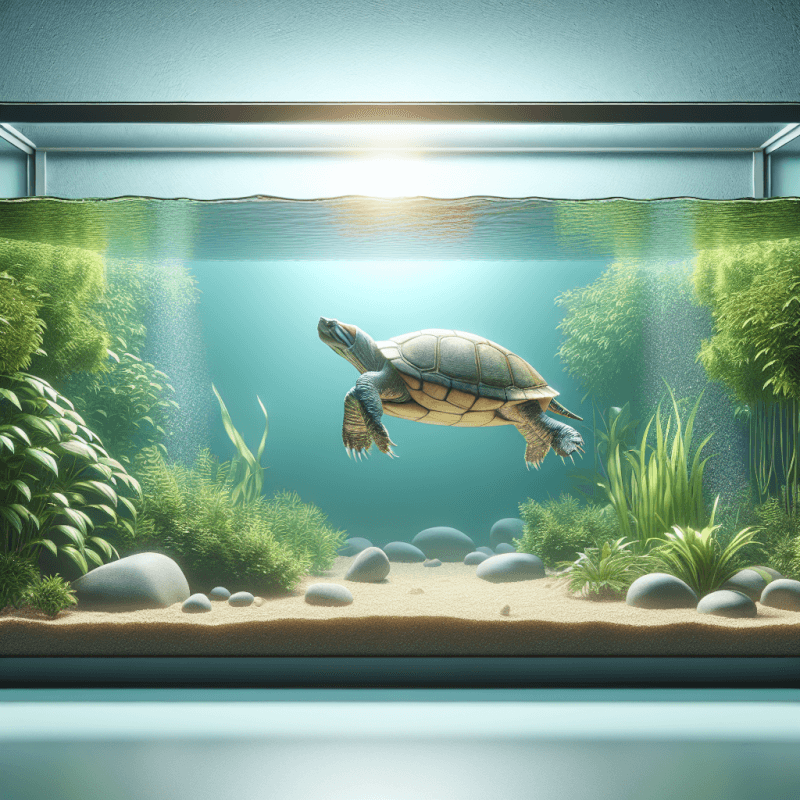
Other alternatives to a larger tank
Building an outdoor pond or enclosure
If a larger tank is not feasible indoors, building an outdoor pond or enclosure can be a great alternative. Outdoor setups provide turtles with a more naturalistic environment, ample swimming space, and exposure to natural sunlight. However, it’s crucial to ensure the outdoor area is secure and free from potential predators.
Use of temporary outdoor enclosures
Temporary outdoor enclosures can be an excellent way to provide extra space for your turtle while still having the convenience of indoor care. These enclosures can be set up in a secure outdoor area during specific times of the year, allowing your turtle to experience a larger space and enjoy the benefits of being outside.
Allowing supervised free-roaming time outside the tank
In addition to providing a suitable tank, allowing supervised free-roaming time outside the tank can be beneficial for your turtle. This allows them to explore and exercise in a larger space under your watchful eye. Make sure the area is secure and free from potential hazards, and always supervise your turtle to ensure its safety.
Conclusion
Ensuring the tank size is appropriate for your turtle is essential for its overall health and well-being. Signs such as limited swimming space, stunted growth, and aggressive behavior indicate that the tank is too small. By following the guidelines for tank size, avoiding common mistakes, and maximizing space in a small tank, you can create a comfortable and spacious environment for your turtle. Regular monitoring, proper maintenance, and considering potential growth will help determine when it’s time to transition to a larger tank. If a larger tank is not possible, exploring alternative options such as outdoor setups or supervised free-roaming time can provide your turtle with additional space to thrive. Remember, a well-sized tank is crucial for promoting the longevity and quality of life for your beloved turtle.
